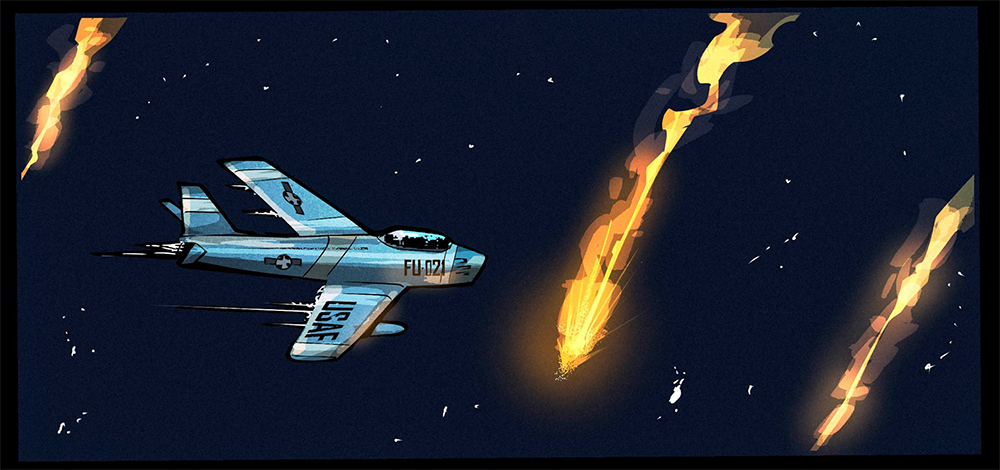 For my next comic I kicked around a couple of ideas and ended up adapting a chapter from The Calculating Stars: A Lady Astronaut Novel. Since I don’t have any rights to the original story, I’m using this as a portfolio piece and an exercise in story adaption.
For my next comic I kicked around a couple of ideas and ended up adapting a chapter from The Calculating Stars: A Lady Astronaut Novel. Since I don’t have any rights to the original story, I’m using this as a portfolio piece and an exercise in story adaption.
I picked my chapter and moved forward with the comic for a couple of reasons.
The main reason is I love the story–I’ve read the trilogy of novels, the novelette, and two related short stories. Most especially, the novelette, which is the final story in the timeline, really moved me (like brought a tear to my eye), and I wanted to make some kind of contribution to this world. I figured a short comic that illustrated some of the elements of the story and gave fans a look at the main characters would be a treat. I also thought it would be good to take a break from zombies and mechs and work on something totally different.
Want to read the comic now? Check out my adaptation of The Calculating Stars chapter 3.
Lastly, I saw it as a technical challenge for me as a writer and for the art team. Here were some of the challenges:
- Story takes place in the 1950’s
- Would need period accurate vehicles, clothing, and hair styles
- Accurate vehicle physics
- Accurate environments and weather
- Couldn’t suck since the novel was one every award under the sun.
On top of that, I allotted a budget for 10 full color pages and so I’d have to pinpoint a chapter or part of a chapter from an entire novel that could exist as a short comic AND maintain the spirit of the original story.
Below I’ll cover three areas that were challenging and fun to adapt.
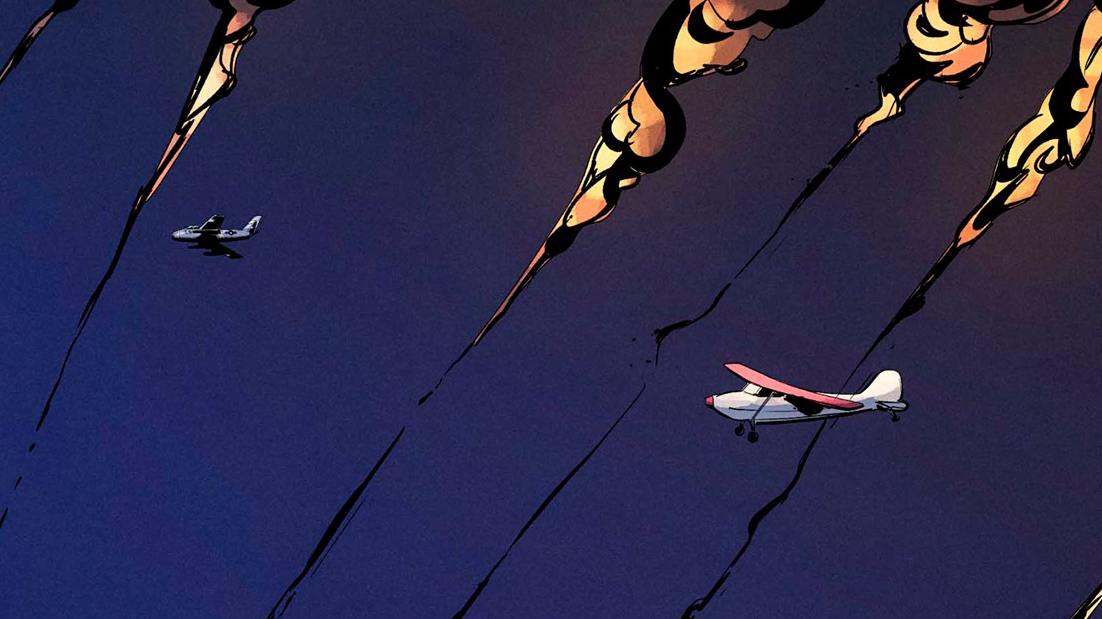

Airplanes in the 1950’s
The main action of the chapter takes place in a Cessna 170 airplane from the post-WW2 era, so I did a bunch of research into the look and history of the plane. Easy enough with Google Images and Wikipedia. The Cessna 170 is a light single engine plane, debuted in 1948, and there are over 2000 of them still flying today.

There were a handful of details I spent a lot of time researching to get right. What do the avionics look like? What does the radio look like? What kind of paint job does a 1950’s airplane have? None of these details are mentioned in the book and they’re details most readers won’t think about, but it’s something you have to get right when transferring to a visual medium. If it’s not accurate, you risk savvy readers out of the story.
Once I finished my research, I sent all the dozens of reference photos to the art team so they could render it on the page accurately and make it look cool in comic panels.

One detail that really threw me for a loop was the radio situation in the Cessna. In the novel, the characters pick up a handheld mic to communicate with, but after I consulted with a pilot buddy of mine, he said they definitely had headsets in that era and he even gave me a couple of brands I could pull images from.
The hand mic seemed counter intuitive…why have a pilot take a hand off the yoke to operate a radio? Wouldn’t a headset mic be safer for hands free? But maybe it was different back then? This information was difficult to find on Google. There was no definitive answer and I looked at tons of pictures of pilots from the era. They all wore headsets.
At one point I was so convinced that pilots in 1950 always wore headsets that I wrote it into the script, which would have been a change from the novel. That switch could have also potentially changed what characters spoke what dialogue.
At the last minute I found this image of Gerrie Cobb, a famous pilot (and astronaut trainee) from the 1950’s using a hand mic in her personal aircraft. So they did have handheld mics!
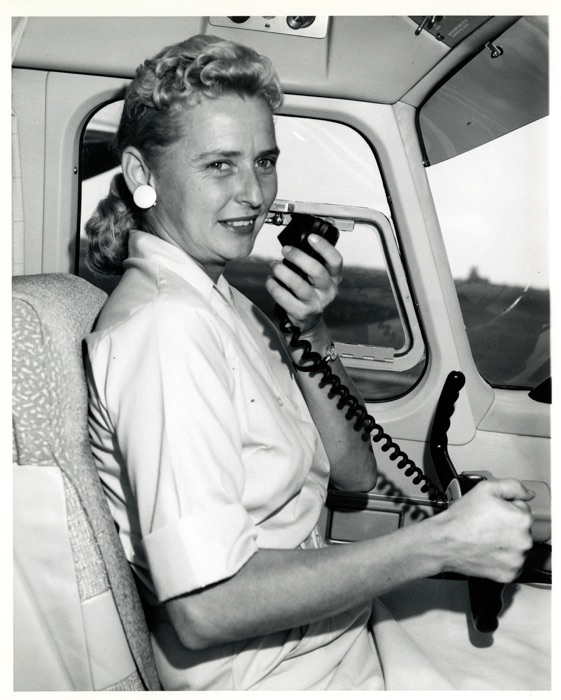
After more research, my sense was personal aircraft were more like flying wagons in that day, so the radio wasn’t a military-type headset you’d see in a fighter jet. I also got the impression radios evolved from hand-held to headsets as the 1950’s went on.
I could be totally off on this and would love for an OG pilot to set me straight. But the handset is what I settled on and it matched the original text.
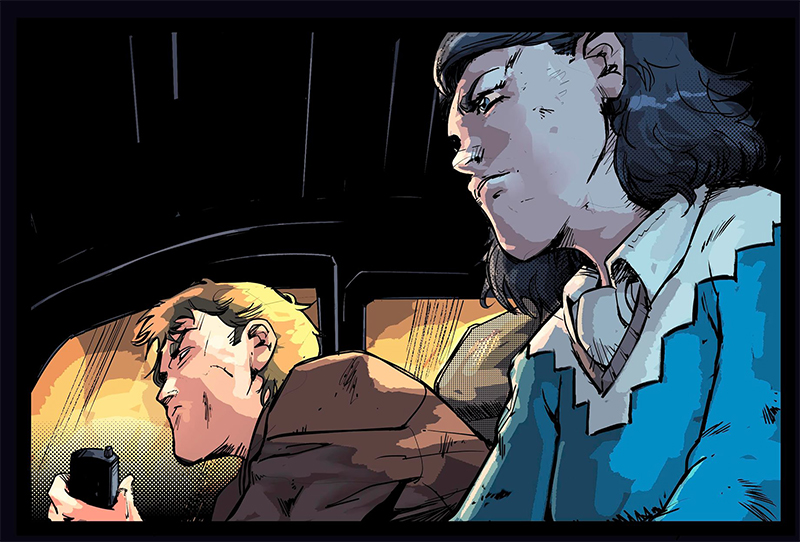
How Far can an Airplane Glide?
Another detail I wanted to understand was how far an airplane could glide unpowered. I had zero previous knowledge of aircraft gliding going in. If I had to guess, I would have said a Cessna can glide a couple of miles depending on weather conditions.
I was totally wrong!
It turns out the Cessna 170 is a good glider. Its glide ratio is at least 7:1, meaning that for every 7 units traveling forward it will lose 1 unit of altitude. For example, if it’s cruising at 8,500 feet, it can glide over 11 miles depending on weather, load, and condition of the plane. So that meant when illustrating this story, if my airplane lost its engine, we couldn’t depict it dropping out of the sky. That also meant we couldn’t have the plane float gracefully to an airport with nary a bead of sweat on the pilot’s brow as that would kill the tension. So I we had to get the pacing just right, which was a major challenge since this comic was so short.
Pacing was such a challenge, I ended up expanding the comic from 10 to 12 pages to give the action more room to breath. This meant scraping together the budget (comics are expensive!) but it was totally worth it, as I think the story flows better.
Line artist David Monge Bautista gets a ton of credit, because he really “got it” when it came to rendering the action cleanly and balancing it all with human moments. I can’t say enough about what an amazing job he did, especially considering he had to translate my script from English to Spanish used DeepL translation software before creating the layouts and rendering the action.

Finding Models for the Main Characters
One fun part of the project was coming up with the look for the two main characters, Elma and Nathaniel York. In the novel, there are only a few details about what they look like. Elma has curly hair and Nathaniel is blonde. I know they’re both attractive (the author goes out of her way to highlight this a bunch, haha) and on the tall side. That’s about it. Importantly, there are NO images of the two main characters on the internet, nothing on the book covers, no fan art, nothing.
I ended up researching 1950’s movie stars to use as models, which was a super fun process. I grabbed pictures of young Tony Curtis and Tab Hunter as inspiration for the Nathaniel. Why not, right? Look at these handsome devils:
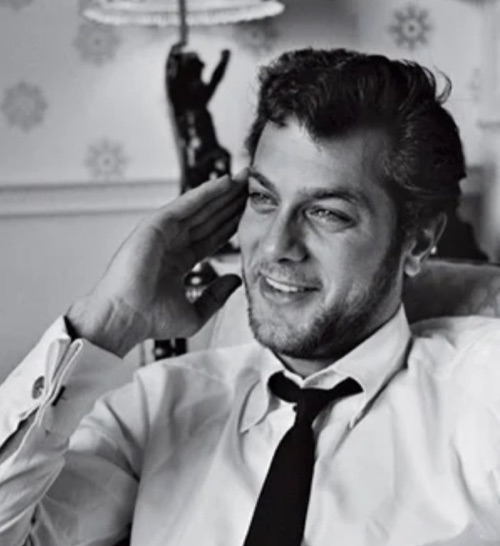

And for Elma, I went with the iconic Ingrid Bergman. I saw these pictures and instantly imagined her as a dashing pilot and eventual astronaut:
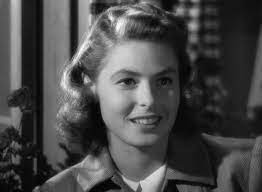

I asked David to use the reference photos as jumping off points and put his own spin on them. I think they turned out great.
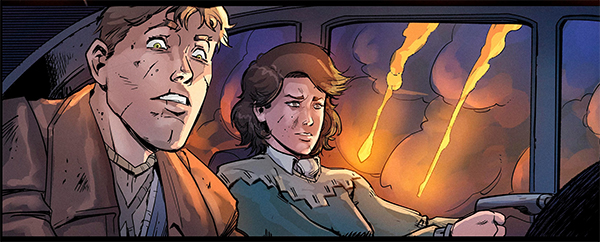
One detail in the novel is the wife often wears a kerchief to hold her hair back when piloting. We tried a couple of versions of this in early drafts and it just wasn’t working. In the end, we ditched the kerchief and just let her rock the hairdo. See below for the kerchief look in this concept art:
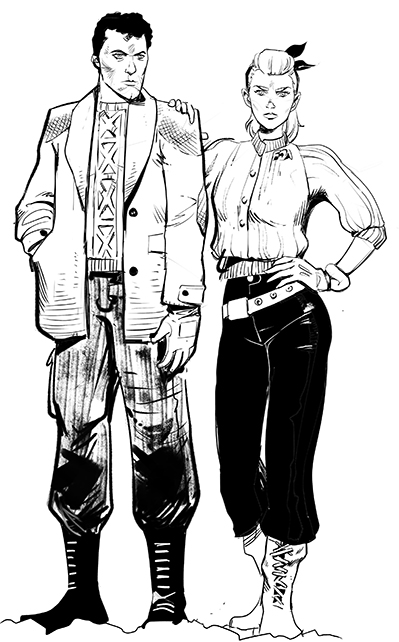
What Story Did We Adapt?
I adapted the first half of chapter 3 of The Calculating Stars: A Lady Astronaut Novel, by Mary Robinette Kowal, winner of both the Hugo and Nebula Awards for best novel.
If you’ve read the novel, you know chapter 3 is a serious banger of a chapter. I remember sitting up out of my chair the first time I read it and thinking how amazing it would be to see it in any kind of visual medium. It had cool airplanes, great action, and intense environment effects.
The main characters are Doctors Elma and Nathaniel York, the coolest married couple in recent Science Fiction.
The comic is completely done! I’ll release it next week in glorious full color, but you can read the chapter it’s based on at The Verge.
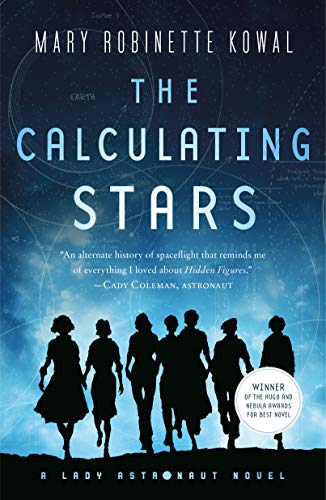
Cool Comics Corner
Here are comics I’ve read recently
- Superman Smashes the Klan (Best comic of 2020 IMHO)
- The Magic Fish (Brought a tear to my eye)
- Paranoia Killer (Badass)
- Outer Darkness, Volume 1
- Stray Dogs, issues 1-2
I’m a contributor to Indie Comix Dispatch. Check them out for all your indie comics news!